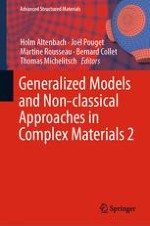This book is the 2nd special volume dedicated to the memory of Gérard Maugin. Over 30 leading scientists present their contribution to reflect the vast field of scientific activity of Gérard Maugin. The topics of contributions employing often non-standard methods (generalized model) in this volume show the wide range of subjects that were covered by this exceptional scientific leader.
The topics range from micromechanical basics to engineering applications, focusing on new models and applications of well-known models to new problems. They include micro-macro aspects, computational efforts, possibilities to identify the constitutive equations, and old problems with incorrect or non-satisfying solutions based on the classical continua assumptions.
